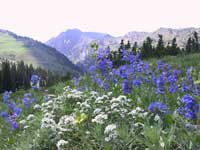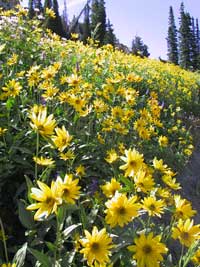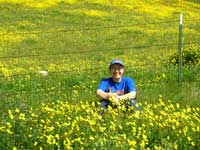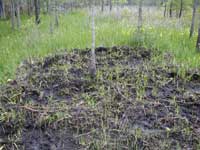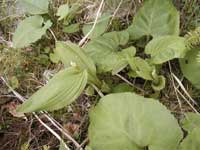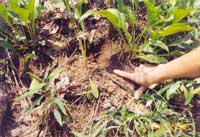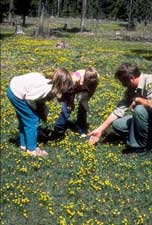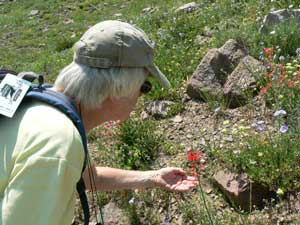USDA Forest Service Celebrating Wildflowers
|
|
|
Ethics and Native Plants
For many of us a field of wildflowers is one of the most beautiful experiences we can encounter in Nature. There is a deep impulse we carry from childhood into adulthood to reach out and pick a flower in a beautiful butterfly-filled meadow or along a public wooded trail lined with spring beauties, irises, or wake-robins. It is because we all carry such memories that we have devoted an entire website to Celebrating Wildflowers. Millions of people visit the public lands each year and if only a small fraction of them each picked a few flowers, soon there would be none for the rest of us to enjoy.
Almost all wildflowers are fragile and many wilt and perish soon after being picked. Over the years, the repercussions of wildflower picking by unthinking people go far beyond the loss of the flowers themselves. A critical chain of events is triggered for years to come once wildflowers are lost. We don’t often realize it, but wildflowers support entire ecosystems for pollinators, birds, and small animals on a micro scale. Butterflies and other insects, small birds, and animals depend on seeds, nectar, and pollen for their food supply and life support system. In addition, some pollinators are not very mobile or have very small home ranges or depend on just one species of plant and die once their habitat has been destroyed.
The Forest Service is very enthusiastic about the public’s increased interest in native plants found on our national forests and grasslands. This interest and increased knowledge and awareness of the benefits of landscaping and gardening with native plants have resulted in nurseries producing native plants for the public to grow. Landscaping and gardening with native plants has many benefits including the creation of habitat for many different animals; from pollinators to birds, to small mammals. Many folks are now planting butterfly gardens that benefit these beautiful animals and bring enjoyment and joy to the gardener. Unfortunately, the Forest Service is experiencing increased poaching of native wildflowers; even some that are listed as endangered species. Many people desire species that are not available commercially because these plants are difficult to grow or take too many years to reach maturity; and some people desire the rarest of the rare bringing those precious jewels ever closer to extinction. Consequently, some people are illegally removing wildflowers and other native plants from their natural habitats. In some cases entire populations of a species have been stolen.
There are four main consequences to this illegal activity:
There are legal ways to collect native plants from national forests and grasslands that will allow their use but still sustain them for future generations. Remember, respect and protect wildflowers and their habitats, leave only footprints, and take only memories and photos so that future generations may enjoy our precious natural heritage. |
|
| NOTE: PDF format links require the Adobe Acrobat Reader to view. | |
| top | Disclaimers | FOIA | Privacy Policy | Quality of Information | Photo Credits & Use |
Location: http://www.fs.fed.us/wildflowers/ethics/index.shtml
Last modified: Tuesday, 24-Jun-2008 21:53:21 EDT
